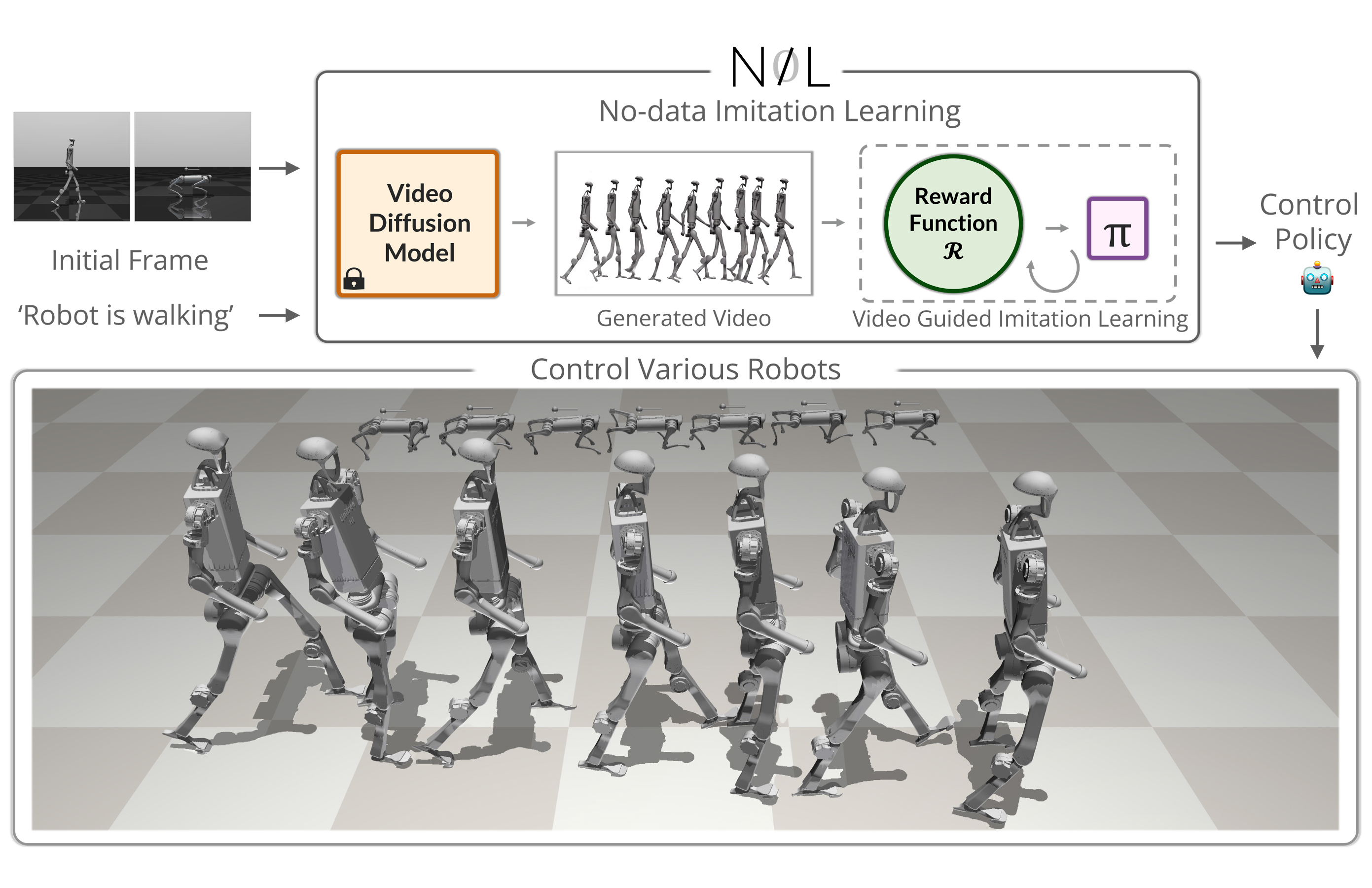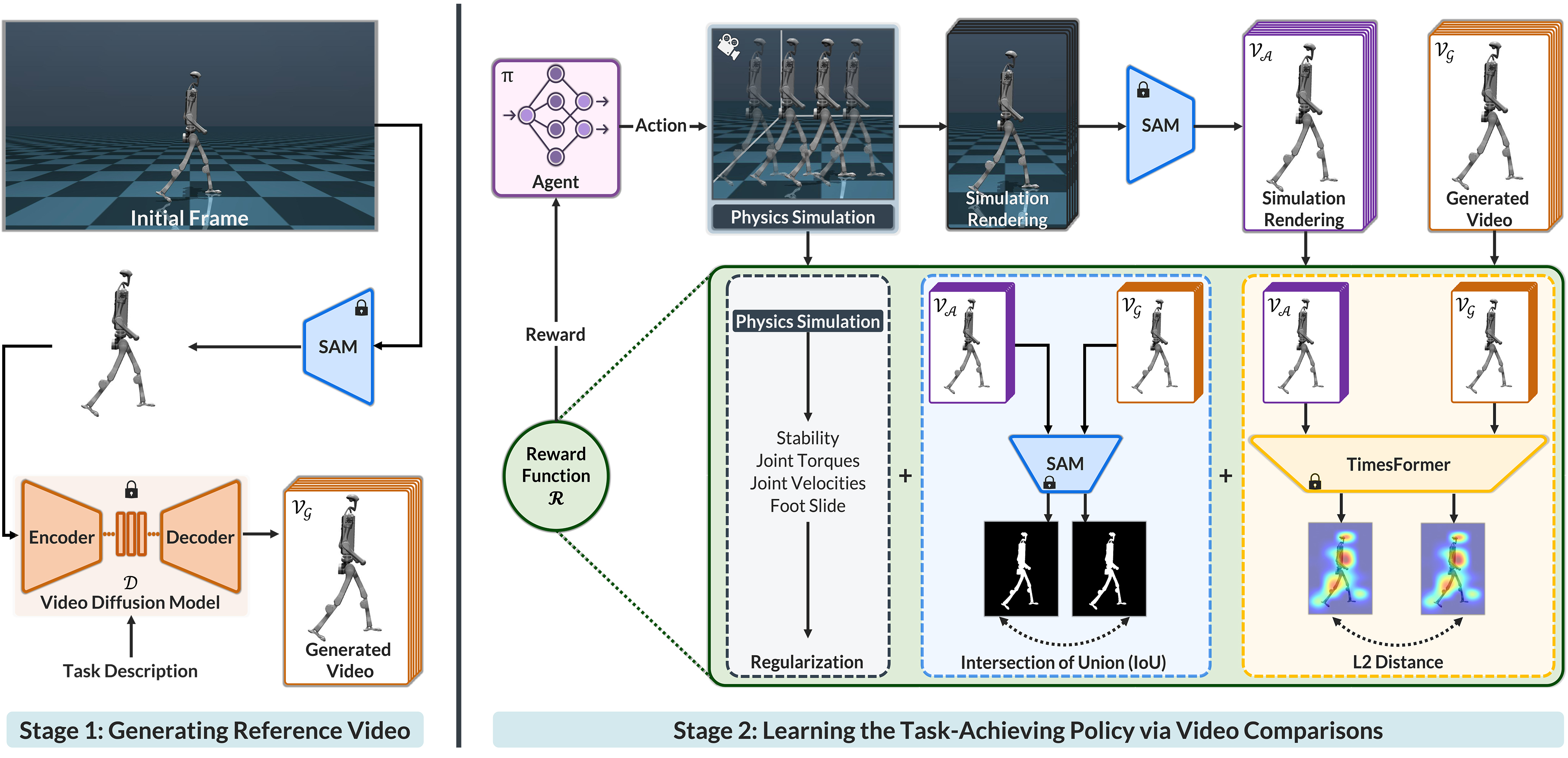NIL - No-data Imitation Learning

Abstract
Acquiring physically plausible motor skills across diverse and unconventional morphologies—including humanoid robots, quadrupeds, and animals—is essential for advancing character simulation and robotics. Traditional methods, such as reinforcement learning (RL) are task- and body-specific, require extensive reward function engineering, and do not generalize well. Imitation learning offers an alternative but relies heavily on high-quality expert demonstrations, which are difficult to obtain for non-human morphologies. Video diffusion models, on the other hand, are capable of generating realistic videos of various morphologies, from humans to ants. Leveraging this capability, we propose a data-independent approach for skill acquisition that learns 3D motor skills from 2D-generated videos, with generalization capability to unconventional and non-human forms. Specifically, we guide the imitation learning process by leveraging vision transformers for video-based comparisons by calculating pair-wise distance between video embeddings. Along with video-encoding distance, we also use a computed similarity between segmented video frames as a guidance reward. We validate our method on locomotion tasks involving unique body configurations. In humanoid robot locomotion tasks, we demonstrate that ``No-data Imitation Learning" (NIL) outperforms baselines trained on 3D motion-capture data. Our results highlight the potential of leveraging generative video models for physically plausible skill learning with diverse morphologies, effectively replacing data collection with data generation for imitation learning.

BibTeX
@misc{albaba2025nilnodataimitationlearning,
title={NIL: No-data Imitation Learning by Leveraging Pre-trained Video Diffusion Models},
author={Mert Albaba and Chenhao Li and Markos Diomataris and Omid Taheri and Andreas Krause and Michael Black},
year={2025},
eprint={2503.10626},
archivePrefix={arXiv},
primaryClass={cs.CV},
url={https://arxiv.org/abs/2503.10626},
}